Introduction
Hey there, fellow animal lovers! Are you ready for an exciting adventure into the world of rabbits?
But there’s so much more to them than meets the eye! Today, we’re going to dive deep into the behavior, potential dangers, and ways to create a safe environment for rabbits and their human companions.
From their natural instincts to their occasional displays of aggression, we’re going to uncover the secrets behind rabbit behavior. Have you ever wondered why rabbits can sometimes become aggressive towards smaller animals?
We’ll explore all of this and more!
But wait, there’s even more to learn! We’ll also discuss the risks associated with having rabbits around children.
We’ll assess the potential risks and provide tips on how to ensure the safety of both children and rabbits in a household.
And let’s not forget about the potential hazards of keeping rabbits as pets! While they may seem harmless, there are a few things we need to be aware of.
So, if you’re ready to embark on a journey into the fascinating world of rabbits, grab a snack (carrots, anyone?) and let’s get started! Together, we’ll explore their behavior, understand their instincts, and discover how to create a safe and loving environment for these adorable furry friends.

Key Takeaways
- Rabbits can display aggression, especially towards smaller animals, due to factors such as territorial disputes and breeding season.
- It is important to provide separate living spaces for rabbits and small animals to prevent aggression and ensure safety.
- Supervised socialization between rabbits and smaller animals is crucial to prevent potential harm.
- Rabbits can be safe around children with proper supervision, handling techniques, and precautions.
- Potential hazards of keeping rabbits as pets include bites, allergies, zoonotic diseases, chewing hazards, poisonous plants, and the risk of escape.
- Regular veterinary check-ups and proper care can minimize health issues in rabbits.
- Aggression in wild rabbits is influenced by territoriality, mating season, and social hierarchy.
- Proper understanding and handling of aggressive behaviors in wild rabbits is essential.
- Rabbit bites can be caused by fear, protection of territory, lack of socialization, or feeling ill or in pain.
- Strategies for dealing with rabbit bites include maintaining distance, removing triggers, gradual desensitization, and seeking professional help if necessary.
- Understanding rabbit instincts and creating a safe environment are key to preventing aggression and ensuring the well-being of rabbits and humans.
The Silent Predators: Understanding Rabbit Attacks on Small Animals
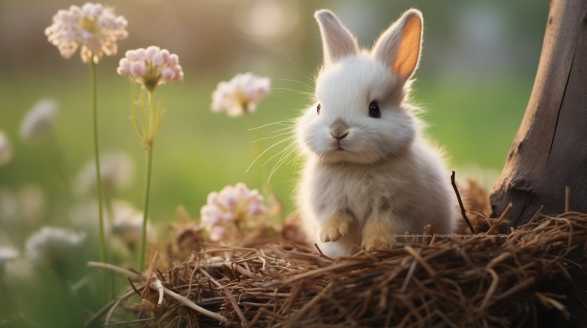
Hey there, fellow animal enthusiasts! Today, I’m going to dive deep into a topic that might surprise you: rabbit attacks on small animals.
Although rabbits are typically seen as cute and harmless creatures, they can display unexpected aggression towards other animals, especially smaller ones. So, grab a carrot and let’s explore this interesting phenomenon together!
The Bunny Surprise
Rabbit Aggression: More Than Meets the Eye
Rabbits are generally known for their peaceful nature. They hop around, munch on grass, and bring smiles to our faces.
Let’s take a closer look at why these fluffy creatures may unexpectedly attack small animals.
Environmental Factors
- Lack of Space: Inadequate living environments can lead to territorial disputes among rabbits. When confined to small or overcrowded areas, the stress levels rise, making them more prone to aggressive behavior towards other animals.
- Food Scarcity: Hungry rabbits are more likely to see smaller animals as competition and may exhibit aggression to protect their food sources.
- Breeding Season: During breeding periods, rabbits can become extremely territorial and aggressive towards anything that threatens their potential mates or offspring.
The Nature of Rabbit Attacks
The Target: Who’s At Risk?
Unfortunately, small animals, such as guinea pigs, mice, and birds, are often the victims of rabbit attacks. Due to their size, they become easy prey for these silent predators.
Aggressive Behaviors to Watch Out For
- Biting: Rabbits have sharp teeth and powerful jaws, which they can use to bite smaller animals. This behavior is often a result of fear or a perceived threat to their territory.
- Chasing: A rabbit that relentlessly pursues another animal is a clear sign of aggression. Whether it’s hopping or running, this behavior should raise concerns about the safety of the smaller animal.
- Mounting: While it may seem amusing at first, rabbits mount other animals not out of affection but rather as a display of dominance. This can lead to harm or stress for the smaller animal involved.
Prevention and Animal Safety Measures
Separate Living Areas
To minimize the risk of rabbit attacks on small animals, it’s crucial to provide separate living spaces for them. Consider setting up enclosures or cages that keep them physically separated but allow for visual interaction.
Sufficient Space and Enrichment
Rabbits need plenty of space to roam and explore, just like any other animal. Providing them with a larger living area, complete with hiding spots, tunnels, and toys, will reduce stress and minimize territorial disputes, ultimately decreasing the likelihood of attacks on other animals.
Supervised Socialization
While it might be tempting to let rabbits and smaller animals interact freely, it’s important to always supervise their interactions. This way, you can intervene if any aggressive behavior is observed, preventing potential harm to the smaller animals.
Well, who would have thought rabbits could have a more predatory side? We’ve learned that environmental factors, such as space and food scarcity, can contribute to the aggression displayed by rabbits towards smaller animals.
So, the next time you consider housing rabbits with other small pets, take proper precautions to keep everyone safe and happy. Until then, keep those fluffy tails wagging and the smiles beaming!
Assessing the Risk: Are Rabbits Dangerous Around Children?

When it comes to pets, rabbits are often seen as cuddly, gentle creatures that make great companions for both adults and children alike. But, as with any animal, it is important to assess the potential risks involved, particularly when children are involved.
I will discuss the various factors to consider when assessing the risks of keeping rabbits around children. We will dive into their behavior, individual temperament variations, physical attributes, and potential health concerns.
Rabbit Behavior
Natural prey instincts
Rabbits have an innate prey instinct due to their history in the wild. They are generally cautious animals that startle easily.
This behavior can be potentially dangerous if not properly managed around children.
Social nature
Rabbits are social creatures and can form strong bonds with their human owners. They are generally gentle animals that thrive on receiving affection and attention.
Individual temperament variations
Like humans, rabbits have individual temperaments. While most rabbits are gentle and tolerant of children, some may naturally be more skittish or aggressive.
Physical Attributes
Claws and scratching
Rabbits have sharp claws that they use for digging, jumping, and defending themselves. Although they are generally docile, rabbits may scratch when they feel threatened or uncomfortable.
Jumping and knocking over
Rabbits are known for their ability to jump and hop around. While this can be adorable to witness, it poses a potential danger when larger rabbits jump on or knock over small children.
Potential Health Concerns
Allergies
Some individuals may be allergic to rabbits or their fur. Allergies can range from mild to severe, causing respiratory distress, itching, or skin reactions.
Zoonotic diseases
Like all animals, rabbits can carry certain diseases that can be transmitted to humans. While the risk is generally low, it’s crucial to practice good hygiene, such as washing hands after handling rabbits or their equipment, to minimize the potential spread of zoonotic diseases.
Bites and scratches
In rare cases, rabbits may bite or scratch when they are scared, in pain, or feel threatened. While this behavior is not common, it is essential to teach children how to handle rabbits gently and respect their boundaries.
Safety Precautions
Supervised interactions
Always supervise interactions between rabbits and children, especially for young children who may not understand how to handle them properly. Educate children about how to approach, touch, and interact with rabbits gently to mitigate any risks.
Proper handling techniques
Teach children how to pick up and hold rabbits correctly to avoid injury to both parties involved. Rabbits should be supported with both hands, with one hand supporting their hindquarters, to prevent them from kicking and potentially injuring young children.
Regular veterinary check-ups
Ensure your rabbits receive regular veterinary check-ups and vaccinations to ensure they remain healthy and free from contagious diseases. A healthy rabbit is less likely to exhibit aggressive or unpredictable behavior.
Assessing the risk of having rabbits around children involves considering various factors, such as their behavior, physical attributes, and potential health concerns. While rabbits are generally gentle and make great companions for children, it’s important to supervise interactions, teach children proper handling techniques, and maintain good hygiene practices.
The Potential Hazards of Keeping Rabbits as Pets

As someone who has always had a soft spot for furry creatures, I have always been drawn to the idea of owning rabbits as pets. They are undeniably adorable, with their floppy ears and fluffy tails.
I will look into the various dangers and risks associated with owning these seemingly harmless critters.
Rabbit Bites: More than Just a Nibble
Rabbits are often perceived as cuddly and harmless creatures, but their bites can be more than just a quick nip. Their sharp teeth can cause serious injuries, especially in children or individuals with compromised immune systems.
It is crucial to exercise caution when handling rabbits, and supervise interactions with children to minimize the risk of bites.
Allergies: When Furry Friends Become Unfriendly
For some unfortunate individuals, owning a rabbit can lead to allergies. Rabbit fur, dander, saliva, and urine can trigger allergic reactions in susceptible individuals.
If you or a family member have a history of allergies, it is important to consider this potential hazard before bringing a rabbit into your home.
Zoonotic Diseases: When Rabbits Transmit Infections
Zoonotic diseases are those that can be transmitted between animals and humans. Surprisingly, rabbits can carry and transmit various infections, including ringworm, salmonellosis, and even tularemia.
Regular veterinary check-ups, proper hygiene practices, and wearing protective gear when cleaning rabbit habitats can help reduce the risk of contracting such infections.
House Rabbits: Tread with Caution
While house rabbits have gained popularity as pets, there are several hazards associated with allowing them full access to your home. Here are some potential risks to be aware of:
Chewing Hazards: Nibbling on More than Just Carrots
Rabbits have a natural inclination to chew, and this can lead to potential hazards within your home. From electrical cords to furniture, rabbits can wreak havoc on your belongings, not to mention the potential danger of electrocution if they chew through live wires.
Poisonous Plants: Not So Bunny-Friendly
Rabbits are herbivores, and they love munching on plants. However, not all plants are safe for them to ingest.
Before bringing a rabbit into your home, ensure that all your houseplants are safe for their consumption.
Escape Artists: When Rabbits Houdini Their Way Out
Rabbits are agile and adept at finding escape routes. Even if you believe your home is bunny-proof, these little furballs can surprise you with their escape-artist abilities.
Once outside, they can face numerous dangers, such as encounters with predators or exposure to extreme temperatures. It is essential to supervise your rabbit’s playtime and secure all potential escape routes to keep them safe.
Health Issues: More than Just Fluffy Cuddles
Rabbits are susceptible to various health problems that can affect their well-being and lifespan. Some common issues include:
Dental Problems: More than Carrots Can Chew
Due to their continuously growing teeth, rabbits are prone to dental issues. Overgrown teeth or malocclusion can cause a lot of pain, leading to difficulty eating and even weight loss.
Myxomatosis: A Viral Outbreak
Myxomatosis is a viral disease that affects rabbits and is highly contagious. It is spread by insects, such as fleas and mosquitos, and can have devastating consequences.
Unfortunately, there is no cure for myxomatosis, and affected rabbits often need to be euthanized to prevent further suffering. Vaccination is the best way to protect your pet rabbit from this deadly disease.
Gastrointestinal Stasis: When Bunnies Can’t Hop
Gastrointestinal stasis, or “GI stasis” for short, is a common and potentially life-threatening condition in rabbits. It occurs when the normal movement of the digestive system slows down or completely stops.
Early intervention is crucial, so if you notice any signs of GI stasis in your rabbit, seek veterinary attention immediately.
While rabbits can make adorable and loving pets, owning them comes with its fair share of potential hazards. From the risk of bites and allergies to the potential for zoonotic diseases and health issues, it is essential to be aware of the responsibilities involved in caring for rabbits.
Love them, care for them, but always be vigilant to ensure the well-being of both your family and your pets.
An In-depth Look at the Aggression in Wild Rabbits

Hello there! Today, I’m going to take you on a wild journey into the fascinating world of aggression in wild rabbits.
So, grab a carrot and let’s get started!
Understanding the Nature of Wild Rabbits
Wild rabbits, also known as European rabbits (Oryctolagus cuniculus), are commonly found in meadows, fields, and forests across Europe and parts of Western Asia. They are known for their slender bodies, long ears, and fluffy tails.
Factors Contributing to Aggression
1. Territoriality
Rabbits are territorial creatures, and this territorial instinct can spark aggressive behavior. They mark their territory through scent marking and create burrows to establish their domain.
2. Mating Season
During the mating season, which typically occurs between late winter and early summer, competition for mates becomes intense. This heightened reproductive drive can lead to aggressive behaviors, especially among males.
3. Social Hierarchy
Within rabbit colonies, establishing dominance is crucial for maintaining order. Rabbits have a well-defined hierarchical structure, whereby dominant individuals have priority access to food, shelter, and mates.
Types of Aggression in Wild Rabbits
1. Fear-Induced Aggression
Rabbits are prey animals, and when they feel threatened or cornered, fear-induced aggression can occur. This type of aggression is primarily defensive and includes behaviors such as lunging, biting, growling, and thumping.
2. Territorial Aggression
As mentioned earlier, territorial aggression is common in wild rabbits. When another rabbit enters their territory, they may engage in aggressive acts to defend their space.
3. Maternal Aggression
Mother rabbits, or does, can display aggression when they feel their offspring are in danger. It’s their way of protecting their young from potential predators or intruders.
4. Redirected Aggression
Rabbits may exhibit redirected aggression when they are unable to vent their frustration directly at the source of their agitation. Instead, they take out their aggression on a different target, often an innocent bystander.
Handling Aggressive Behavior in Wild Rabbits
Now that we have a better understanding of the various types of aggression in wild rabbits, let’s explore some tips on how to handle aggressive behavior if you encounter it.
1. Maintain Distance
If you encounter an aggressive rabbit, it’s important to give them space. Keeping a safe distance minimizes the risk of provoking further aggression.
2. Remove Triggers
Identifying and removing any potential triggers that may be causing the aggression can be helpful. For example, if the rabbit is displaying territorial aggression towards another rabbit, separating them may diffuse the situation.
3. Seek Professional Help
In cases where aggression becomes a persistent issue or poses a threat to human or animal safety, seeking advice from a professional, such as a veterinarian or an animal behaviorist, is advisable. They can provide expert guidance on managing aggression and offer appropriate strategies.
As we conclude our adventure into the world of aggression in wild rabbits, we have gained valuable insights into their natural behavior, the factors that contribute to aggression, and how to approach it. Remember, aggression in rabbits is a normal part of their instincts, and understanding their behavior is crucial for their well-being and our safety.
Stay curious, my friends, and keep exploring the wonderful world of nature!
Dealing with Rabbit Bites: Understanding Rabbit Aggression
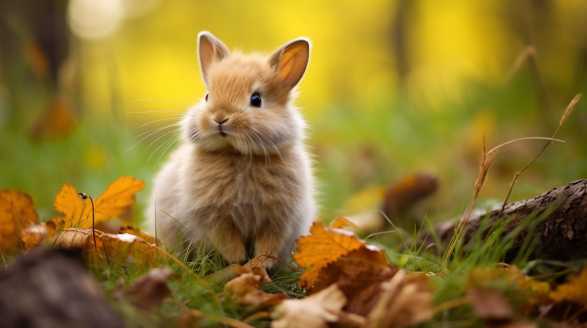
Being a bunny lover and having had my fair share of experiences with rabbits, I cannot deny the fact that even these adorable creatures can display moments of aggression. Rabbit bites can come as a surprise and leave you puzzled and perplexed.
So, hop along on this informative journey through the world of rabbit bites!
Understanding Rabbit Aggression
The Nature of Rabbits
Before diving into the topic of rabbit bites, it’s essential to grasp the basic nature of these fluffy creatures. Rabbits are prey animals, which means they are naturally wired to be cautious and easily startled.
Rabbits are often gentle and docile, but they may display signs of aggression if they feel threatened, frightened, or anxious. Understanding your rabbit’s behavior and body language is crucial in identifying and addressing potential aggression.
Signs of Rabbit Aggression
Rabbit aggression can manifest through various signs. Look out for the following behaviors and body language cues:
- Growling or snarling sounds.
- Lunging or charging at you.
- Scratching or biting when approached or touched.
- Thumping hind feet on the ground loudly.
- Ears positioned flat against their back.
- Agitated tail movement.
- Squinting or narrowing of the eyes.
- Displaying aggressive body postures or defensive behaviors.
Identifying the Reasons Behind Rabbit Biting
Understanding the reasons behind your rabbit’s aggression can help you tackle the issue effectively. Below are some common causes of rabbit biting:
Fear or Anxiety
Rabbits are easily frightened animals, and if they feel threatened or fearful, they may resort to biting as a defense mechanism. Assess their environment for potential stressors like loud noises, sudden movements, or unfamiliar scents.
Protecting Territory
Rabbits can become territorial, especially if they are not neutered or spayed. This territorial aggression is often directed towards perceived intruders, including humans.
Lack of Socialization
Rabbits are social animals and thrive in the company of other rabbits or even humans. If they are not adequately socialized, they may display aggression towards unfamiliar people or animals.
Feeling Ill or in Pain
Rabbits may resort to biting if they are experiencing pain or discomfort. Check for any signs of illness or injury and consult a veterinarian if necessary.
Strategies for Dealing with Rabbit Bites
1. Understand Their Body Language
By observing and understanding your rabbit’s body language, you can predict their behavior and avoid situations that may trigger aggression. Watch for signs of tension, fear, or discomfort and adjust your approach accordingly.
2. Provide a Safe Environment
Ensure your rabbit has a safe and secure space where they can retreat when feeling anxious or overwhelmed. Offer hiding spots, such as tunnels or boxes, to create a sense of security and give them a refuge.
3. Neuter or Spay Your Rabbit
If your rabbit exhibits aggressive behavior due to territorial issues, it is advisable to have them neutered or spayed. This can help reduce aggressive tendencies and improve their overall behavior.
4. Gradual Desensitization
Gradually expose your rabbit to potentially stressful or fearful situations. Start with short exposures and reward them with treats and praise for calm behavior.
5. Proper Handling Techniques
When handling your rabbit, adopt a gentle and calm approach. Avoid sudden movements or tight grips as they can cause distress.
6. Enrichment and Socialization
Provide your rabbit with plenty of mental and physical stimulation. Offer toys, tunnels, and different textures to keep them engaged.
Seeking Professional Help
If your rabbit’s aggression persists or intensifies despite your efforts, it is advisable to consult a veterinarian or a qualified animal behaviorist. They can assess your rabbit’s specific situation and provide targeted advice or interventions to address the underlying causes of their aggression.
Remember, dealing with rabbit bites and aggression requires patience, understanding, and a holistic approach. By creating a safe and enriching environment, socializing your rabbit, and addressing any underlying issues, you can foster a harmonious and rewarding relationship with your beloved bunny.
Understanding Rabbit Behavior: Can They Be Dangerous?
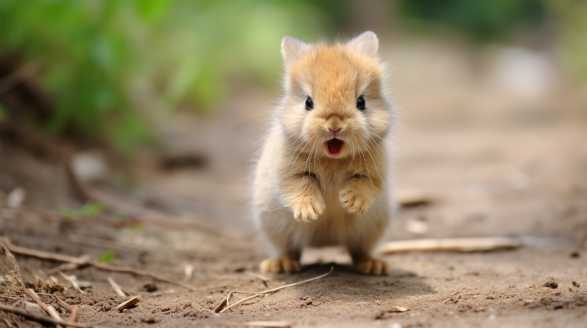
As a lifelong rabbit enthusiast, I have often been asked about the behavior of these furry creatures and whether they can be dangerous. While rabbits are generally known for their cute and cuddly appearance, there are certain aspects of their behavior that can indeed be a cause for concern.
Instincts That Shape Rabbit Behavior
Rabbits are prey animals, which means that their behavior is heavily influenced by their instincts to avoid predators and survive in the wild. It’s important to understand these instincts as they can occasionally lead to behaviors that might be perceived as dangerous.
- Flight or Freeze Response: When faced with a potential threat, rabbits have a strong flight or freeze response. They may quickly dart away or freeze in place, trying to camouflage themselves from danger.
- Burrowing and Hiding: In the wild, rabbits burrow into the ground to create safe hiding places. This instinct can result in rabbits chewing on carpets, furniture, or even wires as they try to mimic burrowing behavior.
- Territoriality: Rabbits can exhibit territorial behavior, marking their territory with urine or feces. This behavior can be misinterpreted as aggression or even dangerous, but it is primarily a defense mechanism to ward off potential threats.
Potential Dangers
While rabbits are generally harmless and gentle creatures, there are a few potential dangers to be aware of when interacting with them. These dangers can be both for the rabbits themselves and for us humans.
- Biting: Although rare, rabbits have the potential to bite when they feel threatened or cornered. This usually happens as a last resort, so understanding their body language and providing them with a sense of security can help prevent such incidents.
- Scratching: Rabbits, like other animals, have sharp claws that they use for digging and self-defense. If mishandled or frightened, they may scratch to protect themselves. Trimming their claws regularly can reduce the likelihood of accidental scratches.
- Toxic Plants: Some plants, when ingested by rabbits, can be toxic and pose a serious health risk. Common examples include lilies, rhubarb leaves, and daffodils. Ensuring a rabbit-proof environment and being aware of toxic plants can prevent unnecessary harm.
- Falls and Injuries: Rabbits are natural jumpers and climbers, so inadequate housing or unrestricted access to high places can lead to falls and injuries. Providing sturdy enclosures and removing hazardous objects can prevent such accidents.
Creating a Safe Environment
Now that we understand the instincts and potential dangers associated with rabbit behavior, it’s important to create a safe environment where both rabbits and humans can coexist harmoniously. Here are some tips to ensure a safe and enjoyable experience with your furry friends:
- Secure Enclosures: Ensure rabbits have adequate enclosures with solid flooring to prevent them from burrowing through carpets or digging under walls. This not only keeps them safe but also protects your home.
- Rabbit-proofing: Remove or secure any potentially dangerous items within the rabbit’s reach. This includes toxic plants, electrical cords, sharp objects, or any small items that could be ingested.
- Socialization: Proper socialization plays a crucial role in shaping rabbit behavior. Spend time with your rabbit, handle them gently, and provide positive experiences to build trust and reduce the likelihood of fear-based aggression.
- Positive Reinforcement: Use positive reinforcement techniques, such as treats and praise, to encourage desired behavior. This helps establish a bond of trust and creates a positive association between you and your rabbit.
- Regular Veterinary Care: Schedule regular check-ups with a rabbit-savvy veterinarian to monitor and maintain your rabbit’s overall health. This ensures early detection of any potential issues and prevents them from escalating into dangerous situations.
- Educate Children and Visitors: If you have children or visitors in your home, educate them about rabbit behavior, the importance of gentle handling, and how to respect the rabbit’s boundaries. This reduces the chances of accidental harm due to misunderstandings or rough handling.
Rabbit behavior, though mostly harmless, can have its share of potential dangers. By understanding their instincts, being aware of potential risks, and creating a safe environment, we can build a strong bond with our furry companions while ensuring their well-being and our own safety.
Conclusion
Whew! What an adventure we’ve had exploring the fascinating world of rabbits!
I hope you’ve enjoyed this journey as much as I have!
I never realized just how complex rabbit behavior can be. From their instincts to their occasional displays of aggression, rabbits are a bundle of surprises.
It’s important to remember that while rabbits may be adorable, they can also display aggressive behaviors. Whether it’s towards smaller animals or humans, understanding the underlying causes and taking preventive measures ensures the safety of everyone involved.
When it comes to keeping rabbits around children, it’s all about supervision, education, and proper handling techniques. By teaching children how to interact with rabbits gently and respectfully, we can create a harmonious environment where both rabbits and children can thrive.
And let’s not forget the potential hazards of keeping rabbits as pets. From bites and allergies to the risk of escape and the dangers of toxic plants, it’s important to be aware of these potential risks and take the necessary precautions to keep both rabbits and humans safe.
Ultimately, understanding rabbit behavior and their natural instincts is key to creating a safe and loving environment. By providing proper care, socialization, and veterinary attention, we can ensure the well-being of these adorable furry friends.
So, as we conclude our journey into the world of rabbits, let’s take what we’ve learned and continue to appreciate and care for these wonderful creatures. Together, we can create an environment where rabbits can thrive and bring joy to our lives.
Frequently Asked Questions
Are rabbits dangerous?
Q: Can rabbits be dangerous?
A: Generally, rabbits are not dangerous animals.
Q: Are there any circumstances in which rabbits can become dangerous?
A: While rare, in certain situations, rabbits may exhibit aggressive behavior, especially if they feel threatened or cornered.
Q: Can rabbits cause harm to humans?
A: Domesticated rabbits are not known to cause harm to humans.
However, they may scratch or bite if mishandled or mistreated, so it is important to handle them with care.
Q: Do rabbits carry diseases that can be dangerous to humans?
A: Generally, rabbits do not carry diseases that are a significant threat to humans.
It is important to maintain proper hygiene and consult a veterinarian for any concerns.
Q: Are rabbit bites dangerous?
A: Rabbit bites are usually not dangerous.
However, any animal bite has the potential for infection, so it is important to clean the wound thoroughly and seek medical attention if necessary.
Q: Do wild rabbits pose any dangers?
A: Wild rabbits are generally harmless, but they may bite or scratch if they feel threatened or are cornered.
Q: Are there specific breeds of rabbits that are more dangerous than others?
A: No, there are no specific rabbit breeds that are inherently dangerous. The temperament and behavior of rabbits are influenced more by individual personality and their upbringing rather than their breed.
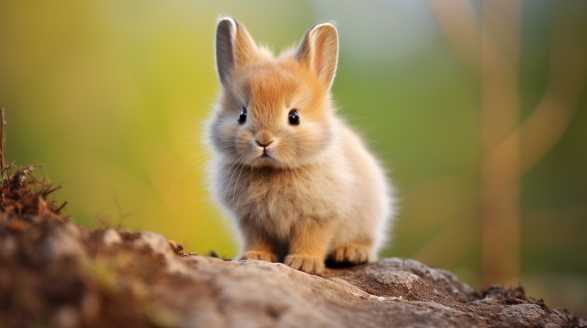
Why Are Rabbits So Cute
Introduction Get ready to dive into the enchanting world of one of the cutest creatures on the planet: rabbits! From their soft fur and twitching noses to their irresistible charm, these adorable animals never fail to capture our hearts. We’ll start by taking a closer look at the anatomy of these fluffy friends. Their soft […]
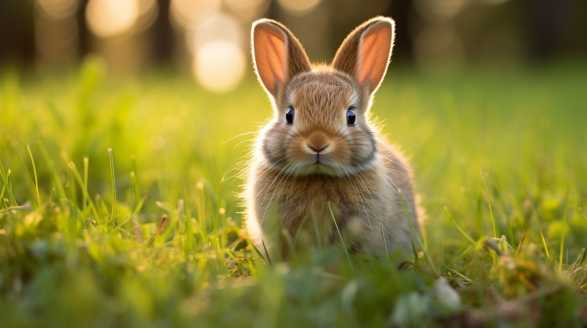
How To Stop Rabbits From Destroying Your Lawn
Introduction Hey there, fellow gardeners and lawn enthusiasts! We all love the sight of a perfectly manicured lawn, don’t we? That’s why I’m here today to share some fantastic solutions to help you reclaim your lawn from these furry invaders. we’ll explore a variety of chemical-free remedies and DIY methods to keep rabbits away from […]

Do Rabbits Nurse Their Young
Do Rabbits nurse they’re young? Let’s find out. Rabbits are adorable and fascinating creatures, known for their cute and fluffy appearance. As furry little mammals, one might wonder how rabbits ensure the survival of their offspring. Do rabbits nurse their young, similar to other mammals? In this article, we will explore the nursing behavior of […]

How To Keep Rabbits Warm in The Winter
Introduction Hey there, fellow rabbit lovers! Winter is just around the corner, and as responsible bunny owners, it’s essential for us to ensure the well-being and comfort of our adorable companions. Winter can be a bit challenging for rabbits, who are sensitive creatures that require extra care to thrive in low temperatures. From managing humidity […]

Can Rabbits Get Sick
Introduction Hey there, rabbit owners and enthusiasts! Are you ready to dive into the world of rabbit health and care? As a proud rabbit owner myself, I understand the love and concern we have for our furry companions. We want nothing but the best for them, right? we’ll be covering a range of topics related […]
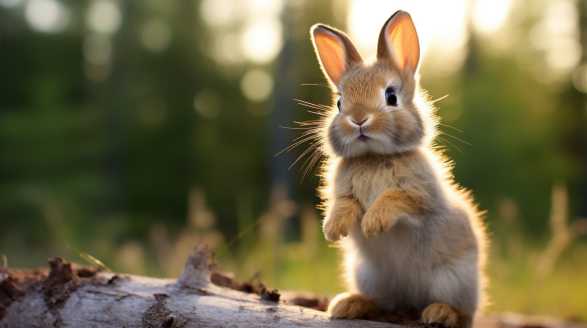
Do Rabbits Recognize Their Owners
Introduction Have you ever wondered if your fluffy, hoppy companion recognizes you as their owner? Many rabbit owners, including myself, have pondered this fascinating question. After all, rabbits are known for their adorable faces and unique personalities. we’re diving deep into the world of rabbit cognition and exploring whether rabbits can form emotional bonds, identify […]
